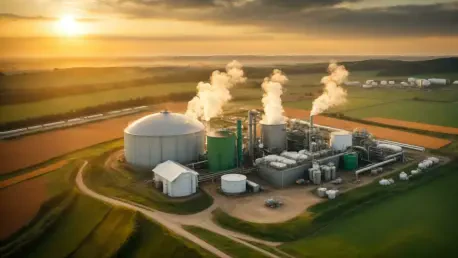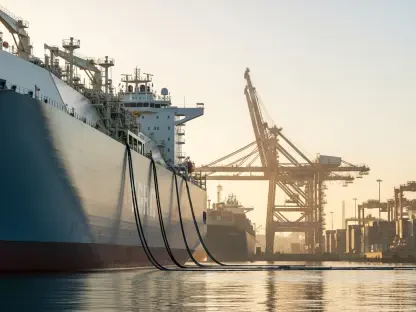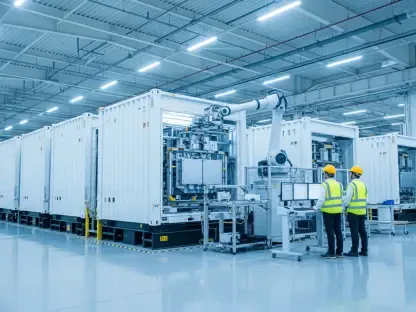Christopher Hailstone, a specialist in energy management and renewable energy, offers his expert insights on Aemetis Biogas’ recent partnership with Centuri Holdings. Together, they are spearheading a transformative project to expand renewable natural gas production, promising significant advancements in sustainable energy solutions.
Can you explain the significance of the $27 million agreement between Aemetis Biogas and Centuri Holdings?
The $27 million agreement marks a pivotal step in developing renewable energy infrastructure. It’s a substantial investment that underscores a commitment to scale up biogas cleanup systems for numerous dairy digesters. By partnering with a major infrastructure services contractor like Centuri, Aemetis can move ahead with its ambitious plan to produce renewable natural gas from a large network of dairies.
How did Aemetis decide to partner with Centuri for building biogas cleanup systems?
Aemetis likely chose Centuri due to their robust expertise in large-scale industrial projects and utility distribution, which aligns perfectly with the demands of constructing complex biogas cleanup systems. Their track record in managing extensive infrastructure projects would have been a critical factor in this decision, promising efficient and timely delivery of the necessary systems.
Could you elaborate on the specific role that Centuri will play in the construction of the dairy digesters?
Centuri is set to take on the construction of the biogas cleanup systems, which are essential in transforming raw biogas into renewable natural gas suitable for pipeline injection. Their role will likely extend to construction management and possibly overseeing the integration of these systems with existing infrastructure, ensuring that all elements work seamlessly together.
What are the anticipated future collaborations between Aemetis and Centuri beyond this agreement?
Looking beyond this initial agreement, there is potential for collaboration in additional areas such as energy efficiency enhancements and carbon sequestration initiatives. Given Centuri’s capabilities, future projects may involve more complex infrastructure installations and expansions to further bolster Aemetis’ renewable energy capabilities.
How does Aemetis plan to scale up the construction of dairy digesters with this partnership?
Aemetis plans to utilize this partnership to accelerate the pace at which new dairy digesters are constructed. With Centuri’s involvement, Aemetis can leverage extensive construction resources and expertise, enabling them to simultaneously work on multiple sites and efficiently expand their renewable natural gas production capacity.
Can you discuss the expectations for the 16 dairies that will begin operations this summer under the Aemetis Biogas Central Digester Project?
This summer, when 16 dairies commence operations, it’s expected that these facilities will significantly boost biogas production. Each dairy will add to the cumulative output, creating a substantial volume of renewable natural gas, thereby enhancing the project’s capacity to deliver consistent energy into the utility gas pipeline.
What challenges might arise with the construction and operation of the 36 miles of biogas pipeline?
Building and operating a 36-mile biogas pipeline presents several challenges, including securing appropriate land permissions, managing environmental impacts, and ensuring pipeline integrity and safety. There’s also the task of synchronizing the pipeline’s development with dairy operations to maintain a continuous flow of biogas.
How does the central biogas-to-RNG production facility integrate into Aemetis’ larger projects?
The central facility is integral to Aemetis’ broader strategy by acting as the hub where biogas from multiple dairies is transformed into RNG. It serves as a crucial link between regional dairy operations and the national pipeline system, facilitating the distribution of renewable energy on a larger scale.
Eric McAfee mentioned other projects like energy efficiency and carbon sequestration. Can you elaborate on these initiatives?
These projects likely involve advancing technologies that reduce energy use at Aemetis facilities, further increasing the efficiency of biogas production. The carbon sequestration initiative is particularly significant, aimed at capturing and storing large quantities of CO2, directly addressing some of the pressing needs in reducing greenhouse gas emissions.
How does Centuri’s experience in utility distribution align with Aemetis’ renewable energy initiatives?
Centuri’s extensive background in utility distribution is well-aligned with Aemetis’ need for efficient and reliable energy delivery systems. Their experience ensures that the RNG produced is seamlessly integrated into existing utility networks, which is crucial for maintaining a steady supply of renewable energy to customers.
What are some key examples of synergies between Centuri and Aemetis?
A clear synergy lies in Centuri’s capability to expedite construction and Aemetis’ expertise in renewable fuels. Together, they can enhance project timelines and ensure successful deployment of biogas facilities, capitalizing on shared goals of scaling renewable energy solutions.
What has been Centuri’s involvement in renewable natural gas projects before this collaboration?
Centuri has been increasingly involved in RNG projects, leveraging its expertise to construct and maintain infrastructure crucial to biogas systems. Their growing engagement in such projects makes them a strong partner to support Aemetis’ endeavors in renewable energy expansion.
Can Dylan Hradek provide more details about Centuri’s role at the Riverbank site?
Although specifics from Dylan Hradek aren’t available here, Centuri’s role at the Riverbank site likely centers on leveraging their distribution expertise to address the complex requirements of RNG processing and delivery, supporting Aemetis’ ambitions to enhance sustainable fuel operations.
How does Aemetis’ plan to generate over 1 million MMBtu of renewable natural gas from 50 dairies impact the overall renewable energy market?
This ambitious plan has the potential to significantly impact the renewable energy market by substantially increasing the availability of RNG. It represents a strategic contribution towards reducing fossil fuel reliance and spurring similar projects, gradually shifting the energy landscape towards greener alternatives.
What are the benefits of installing a mechanical vapor recompression system at the Keyes ethanol plant?
Installing this system at the Keyes ethanol plant aims to boost efficiency by reducing energy usage and operational costs, potentially increasing cash flow significantly by 2026. It’s a critical step toward enhancing the plant’s sustainable operations and financial performance.
How significant is the carbon sequestration initiative at the Riverbank site in terms of environmental impact?
The carbon sequestration project is significant, as it could sequester 1.4 million tons of CO2 annually, making a substantial contribution to offsetting carbon emissions. This initiative exemplifies Aemetis’ commitment to environmental stewardship and aligns with global efforts to mitigate climate change.
What is the current status of the 78 million gallon-per-year sustainable aviation fuel and renewable diesel plant?
The plant has secured essential permits and continues to progress. This facility represents a major step in diversifying Aemetis’ renewable fuel offerings, potentially positioning the company as a leader in providing sustainable solutions for the aviation and transport sectors.
Can you explain the industrial and electrical projects being negotiated at the Riverbank location?
These projects could involve creating new industrial facilities and upgrading electrical systems to support enhanced renewable energy production. Such developments are likely aimed at expanding operational capacities and improving efficiency in processing renewable fuels.
How does Aemetis view its future in terms of expanding its portfolio of renewable energy and efficiency projects?
Aemetis envisions a future where they are at the forefront of renewable energy innovation. By continually expanding and diversifying their project portfolio, they aim to lead the charge in creating robust, efficient, and environmentally responsible energy solutions for lasting sustainability.
Do you have any advice for our readers?
One key piece of advice is to remain informed and proactive about sustainable practices and technologies. As the renewable energy landscape evolves, understanding how these changes affect industries and daily life will be vital in navigating these transitions smoothly.









